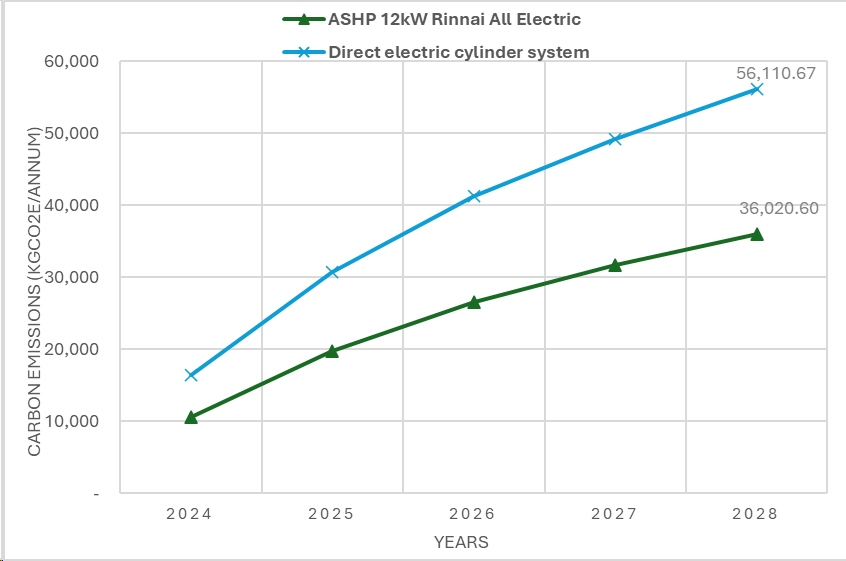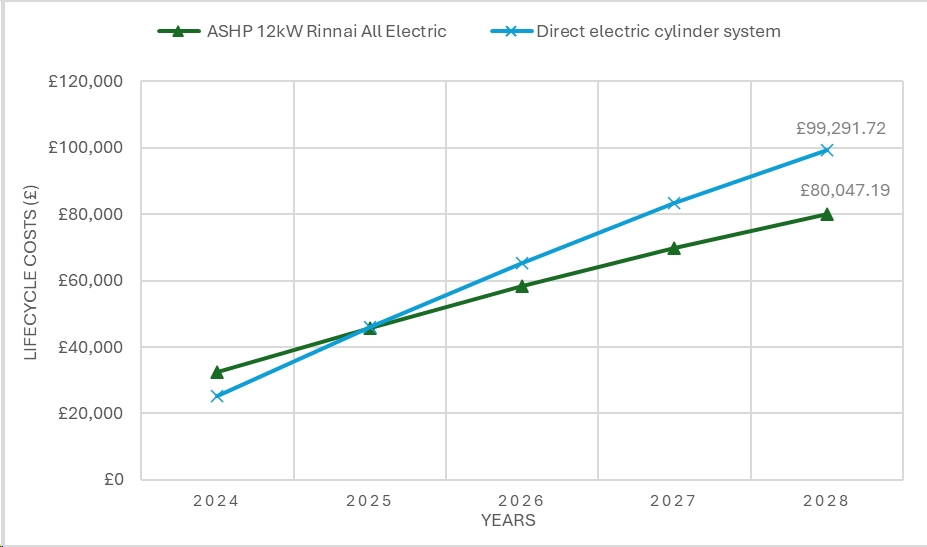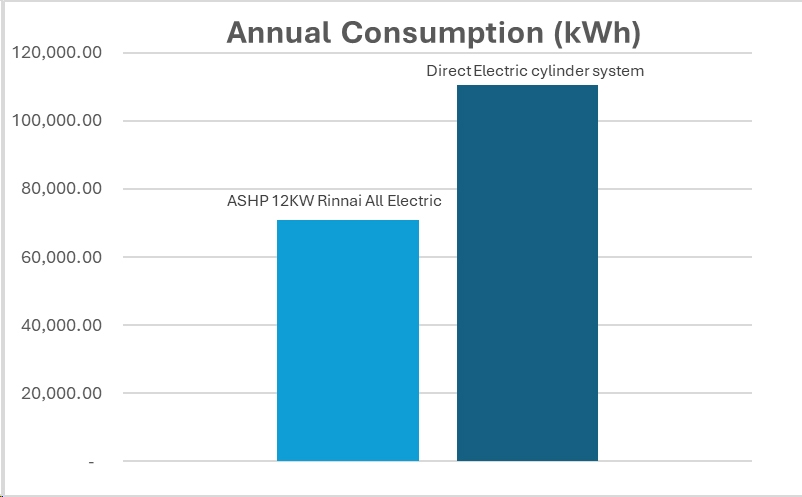A chain of gyms has successfully piloted Rinnai’s LOW-GWP commercial ASHP (Air Source Heat Pump) with the aim of replacing their existing carbon intensive electric storage water heater systems which rely on multiple electrical immersions. The flexibility of Rinnai’s bespoke system design capability has even ensured that some of the existing electric water heaters can stay in situ as a part of a cost saving Hybrid heat pump system – saving the end user on cost and reducing carbon emissions.
Each gym studio that Rinnai had to measure revealed different kW load limits ranging from 8kW to 20kW. Rinnai’s system design team then decided on the necessary decarbonizing technology required for each individual gym, bespoke design-led packages including a mixture of Rinnai decarbonizing HDW heating technologies was then selected, these include;
- LOW-GWP R290 ASHP’s
- Infinit-e Electric Storage water heaters
- Optimised Heat Pump Cylinder Coil cylinder or plate heat exchanger.
- Unvented kit (cold water feed).
- System controls
The Rinnai system selection is supported by unique capital expenditure, operational expenditure and carbon modelling, ensuring that the end user could make practical, economical and technically feasible decisions.
Below is a few graphs that illustrate carbon output, CAPEX costs and system efficiency over 5 years. The graphic inputs are shown only for the 12 kW ASHP, 300 heat pump cylinder and direct electric storage water heaters (E-cylinder 305L) for one of the gyms in the southern region. The first graph focuses on carbon production.

The second below graph details the CAPEX costs associated with Rinnai’s 12kW Air Source Heat Pump over 5 years.

Below is a graph that reveals the annual consumption of energy Rinnai’s 12kW fully electric system.

